
What happens if you mix chlorine and bromine in a Spa Hot Tub?
2025-11-25 15:35Chlorine and bromine are two of the most common disinfectants used in the routine maintenance of whirlpool spa hot tubs.
Many novice users are curious and even try:
"What will happen if I add chlorine and bromine to the whirlpool spa hot tub at the same time?"
This action may seem to "enhance the disinfection effect," but it actually involves complex chemical reactions that can affect water quality safety and even damage the equipment.
This article will systematically analyze the risks and countermeasures of mixing chlorine and bromine in a whirlpool spa hot tub from the perspectives of scientific principles, chemical reactions, safe use, and maintenance recommendations.
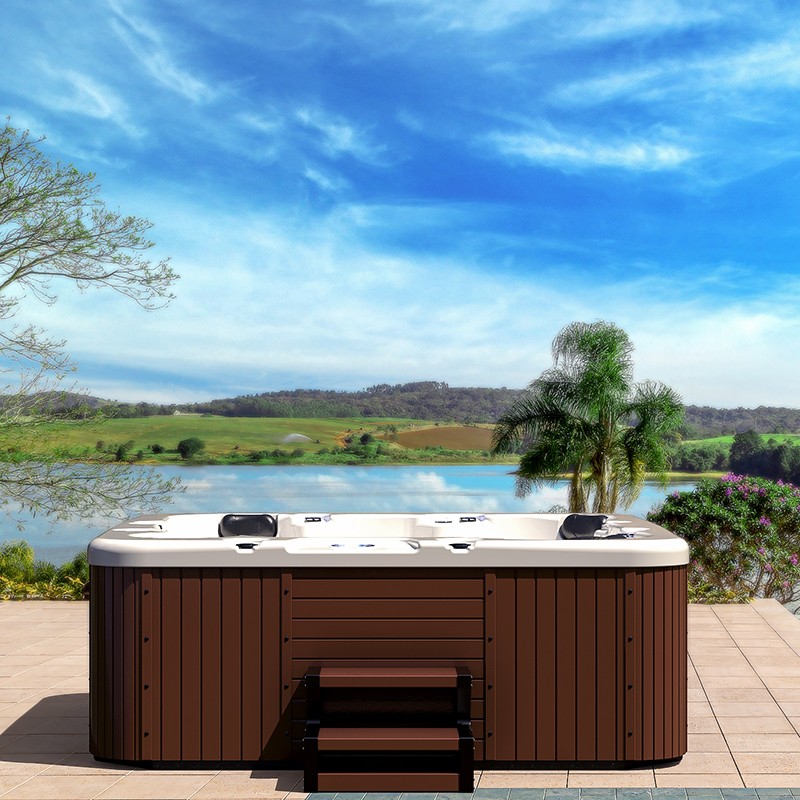
What are the roles of chlorine and bromine in a whirlpool spa hot tub?
Before discussing the risks of mixing, it is essential to understand the characteristics and functions of chlorine and bromine.
1. The Mechanism of Chlorine's Action
Chlorine (usually used in liquid chlorine, dichloride, or trichloride form) forms hypochlorous acid (HOCl) in water. Its main functions are:
• Killing bacteria, viruses, and fungi;
• Oxidizing organic matter in the water;
• Preventing algae growth.
Chlorine reacts quickly and has strong bactericidal power, but it decomposes easily under sunlight or high temperatures, limiting its sustained disinfection ability.
2. The Mechanism of Bromine
Bromine (commonly bromine tablets or granules) reacts with water to form hypobromic acid (HOBr), characterized by:
• Higher stability than chlorine, making it particularly suitable for warm water bodies;
• Effective disinfection even in high-temperature environments (such as whirlpool spa hot tubs);
• Relatively mild taste, with less irritation to skin and eyes.
Therefore, many whirlpool spa hot tubs recommend using bromine instead of chlorine, especially indoors or in environments with prolonged immersion.
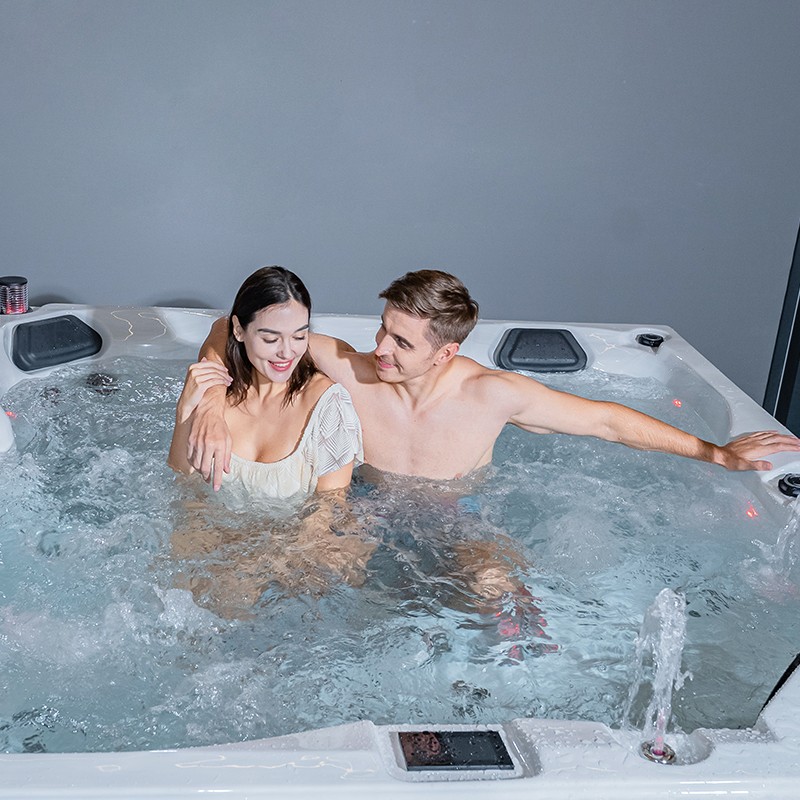
What chemical reaction occurs when chlorine and bromine are mixed?
Mixing chlorine and bromine does not simply result in a superposition of disinfection effects; rather, it produces a complex chemical reaction.
1. Halogen Exchange Reaction
When chlorine (Cl2/HOCl) and bromine (Br2/HOBr) are present simultaneously, a halogen exchange reaction occurs: HOCl + Br^- → HOBr + Cl^-
This reaction means that some free chlorine in the water will be converted into free bromine (HOBr).
2. Instability in Disinfectant Efficacy
Chlorine has a fast disinfecting speed but a short lifespan, while bromine has high stability but a slow disinfecting speed. When mixed:
• Chlorine partially disappears, reducing the disinfecting speed;
• Bromine concentration in the water increases, delaying the disinfection reaction;
• Water quality may experience temporary fluctuations in disinfection effectiveness, making precise control difficult.
3. Potential Byproducts
The mixture of chlorine and bromine may also produce small amounts of bromochlorine compounds (such as bromochlorinated organic compounds):
• Mild irritation to skin or eyes;
• Long-term accumulation may lead to unpleasant odors or water turbidity.
This is why professional spa maintenance typically emphasizes "Never use chlorine and bromine simultaneously."
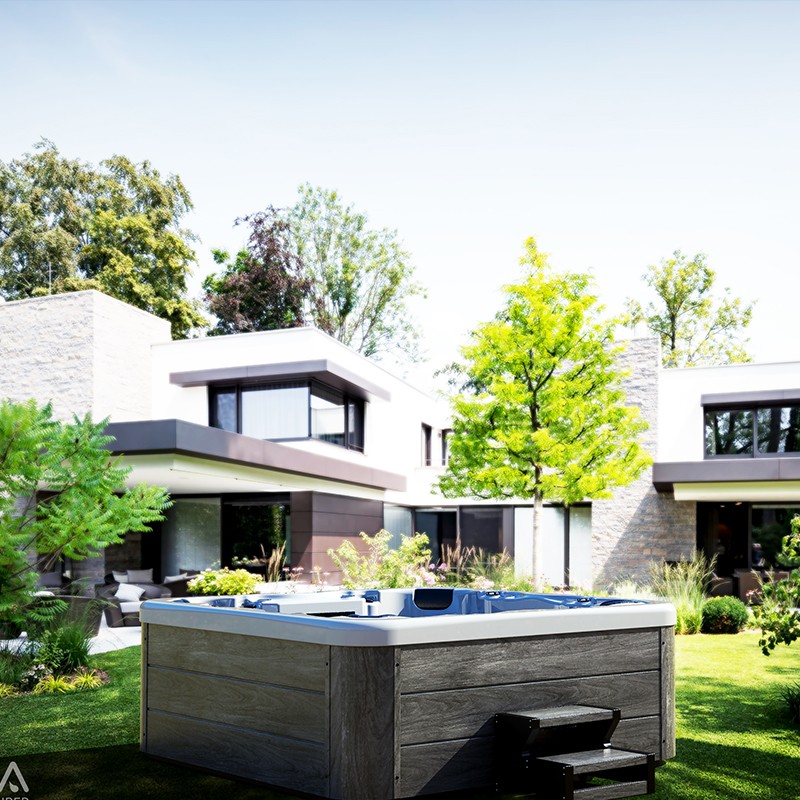
What are the effects of mixing chlorine and bromine on the water quality of the whirlpool spa hot tub?
1. Uncontrolled Water Balance
After mixing, the concentrations of free chlorine and free bromine in the whirlpool spa hot tub water become difficult to control stably.
• Insufficient disinfectant may lead to bacterial or algal growth;
• Excessive disinfectant may irritate the skin and eyes.
2. pH and Total Alkalinity Fluctuations
The addition of both chlorine and bromine will affect the pH value of the whirlpool spa hot tub water.
• Excessive chlorine may cause a decrease in pH;
• Bromine may slightly increase acid-base fluctuations under heating conditions.
When used in combination, pH adjustment becomes more complex and can easily lead to water quality instability.
3. Increased Odor in Water
The mixing reaction may produce bromine and chlorine byproducts, resulting in a slightly pungent odor.
While this will not immediately harm health, it will affect the user experience.
4. Turbidity and Sedimentation
If minerals (copper, iron, calcium, etc.) are present in the whirlpool spa hot tub water, mixing chlorine and bromine may promote sedimentation or color changes, making the water appear cloudy or slightly greenish.
Will mixing chlorine and bromine affect the whirlpool spa hot tub equipment?
1. Corrosion of Metal Components
Both chlorine and bromine in water are strong oxidizing agents. Mixing them may enhance their oxidizing power:
• Risk of corrosion to pumps, heaters, nozzles, and metal connections;
• Long-term mixing may shorten equipment lifespan.
2. Damage to Seals and Plastic Components
A strong oxidizing environment accelerates the aging of seals, rubber parts, and plastic pipes, leading to leaks or damage.
3. Increased Maintenance Difficulty
Equipment requires more frequent cleaning and water quality adjustments, increasing consumable consumption.
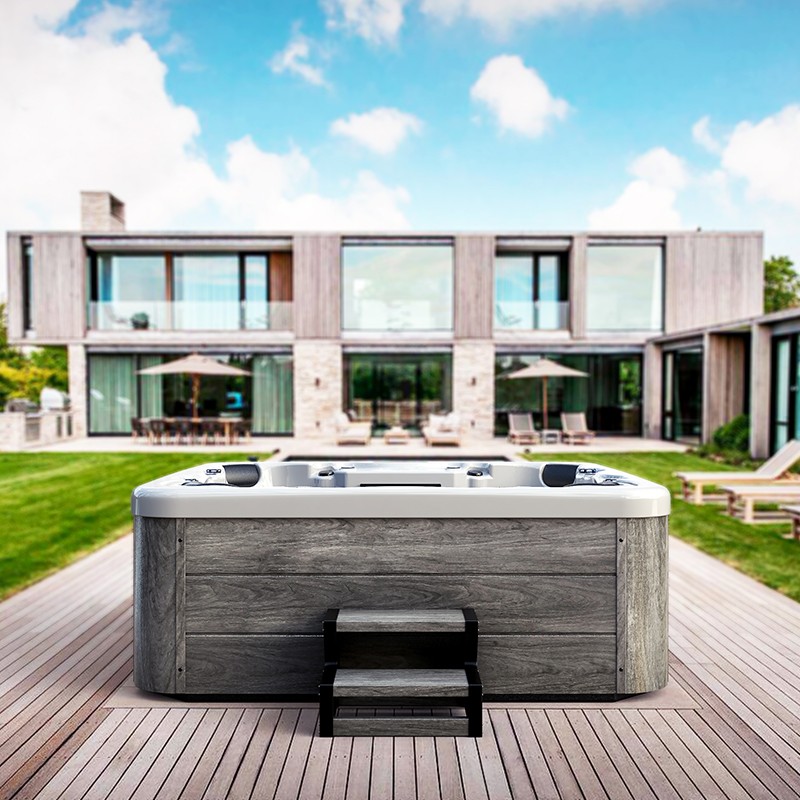
Is there a safe way to mix chlorine and bromine?
While the concentration of free chlorine and bromine can be scientifically controlled, mixing them is not recommended for use in whirlpool spa hot tubs.
Reasons include:
• Small water volume, high temperature, and easy accumulation of disinfectants, making control difficult;
• Difficulty for users to accurately measure and adjust the chlorine to bromine ratio;
• Increased risk of byproducts and water quality fluctuations.
Best Practices:
• Choose a primary disinfectant, either chlorine or bromine, and use it alone;
• If using bromine, completely stop adding chlorine;
• If using chlorine, avoid adding bromine-containing products.
What should I do if chlorine and bromine have already been mixed?
When chlorine and bromine are found to be present in the whirlpool spa hot tub water, it is recommended to take immediate action:
1. Stop adding any chlorine or bromine
Avoid further aggravating the mixing reaction.
2. Test the water quality
Use water quality test strips or liquid reagents to test:
• Free chlorine (FC) and total chlorine (TC);
• Bromine (Br) concentration;
• pH value, alkalinity, and total dissolved solids (TDS).
3. Drain and dilute
If the chlorine and bromine mixture is of a high proportion, it is recommended to partially or completely replace the whirlpool spa hot tub water to dilute the mixed byproducts.
4. Adjust Water Quality
• Adjust pH to 7.2–7.8;
• Add the required disinfectant (chlorine or bromine alone);
• Run the circulation system to ensure even distribution of chemicals.
5. Enhance Filtration
Clean or replace the filter to remove suspended solids and byproducts from the water.
Why Professional Maintenance Recommendations Never Mix Chlorine and Bromine?
1. High Control Difficulty
In a whirlpool spa hot tub with high temperature and low water flow:
• Chlorine reacts quickly, bromine reacts slowly;
• Water quality stability is difficult to predict after mixing.
2. Uncontrollable Byproducts
Halogen byproducts produced by mixing may:
• Irritate skin or eyes;
• Cause odor;
• Affect long-term user experience.
3. Increased Maintenance Costs
Mixing accelerates the aging of spa equipment, increases disinfectant consumption, and requires more frequent drainage and cleaning.
Which is more suitable for a whirlpool spa hot tub: chlorine or bromine?
1. Advantages of using chlorine
• Strong bactericidal power and rapid reaction;
• Suitable for hot tubs with high usage frequency;
• Relatively simple testing and adjustment.
Disadvantages: Easily decomposes in sunlight, requiring the addition of cyanuric acid (CYA) for protection.
2. Advantages of using bromine
• Good stability, suitable for high-temperature water;
• Less irritation to skin and eyes;
• Maintains stable disinfection effect during continuous bathing.
Disadvantages: Slower reaction speed, slightly higher cost, and slower initial sterilization.
Therefore, a single disinfectant should be chosen for whirlpool spa hot tubs, with the choice between chlorine or bromine depending on the usage environment, temperature, and maintenance habits.
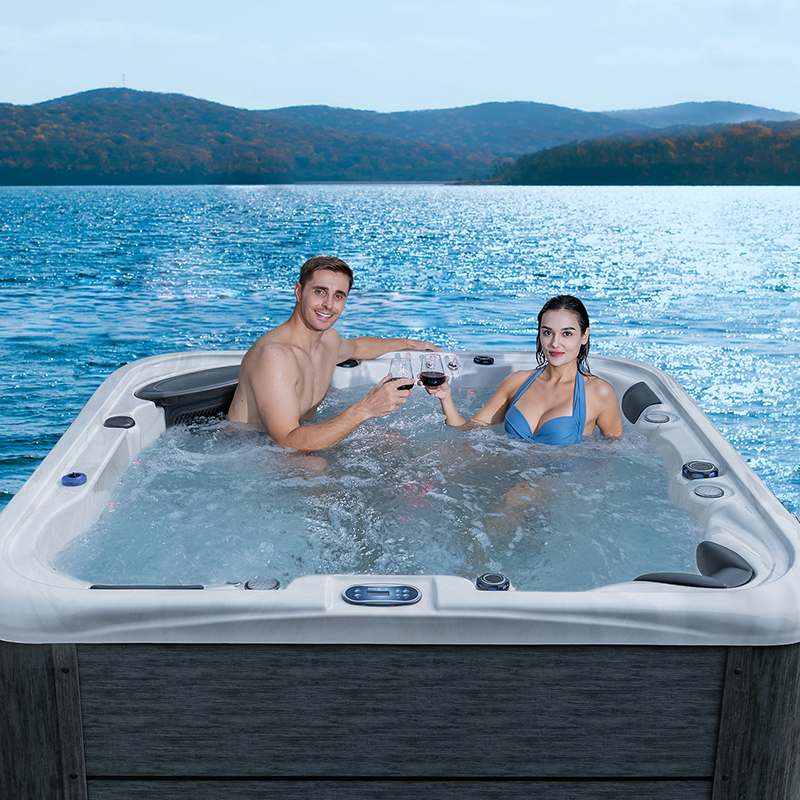
Whirlpool Spa Hot Tub Routine Maintenance Recommendations
To avoid the risks associated with mixing different disinfectants, users are advised to follow these steps when maintaining their Whirlpool Spa Hot Tub:
• Specify the disinfectant type: Always choose chlorine or bromine; do not alternate or mix them.
• Regularly test water quality: Test pH, total chlorine/free chlorine or bromine concentration, and alkalinity weekly.
• Regularly circulate the filter: Ensure even water circulation to avoid localized high concentrations.
• Shock disinfection: Use a shock disinfectant (single disinfectant) monthly or when water quality changes.
• Clean the equipment: Regularly clean the spa hot tub filter cartridges and piping to prevent the accumulation of residual byproducts.
What Are the Main Export Markets for LOVIA SPA?
LOVIA SPA exports to more than 60 countries worldwide, including the USA, Australia, UK, France, Germany, Korea, and the Middle East. Our spas meet all local safety and performance standards, supported by global certification. Buyers from different regions enjoy flexible payment, language support, and fast quotes.
As an experienced exporter and manufacturer, we adapt products for different climates and consumer needs. Purchasing from LOVIA SPA guarantees reliable logistics, high-quality goods, and competitive wholesale prices tailored to each market.
